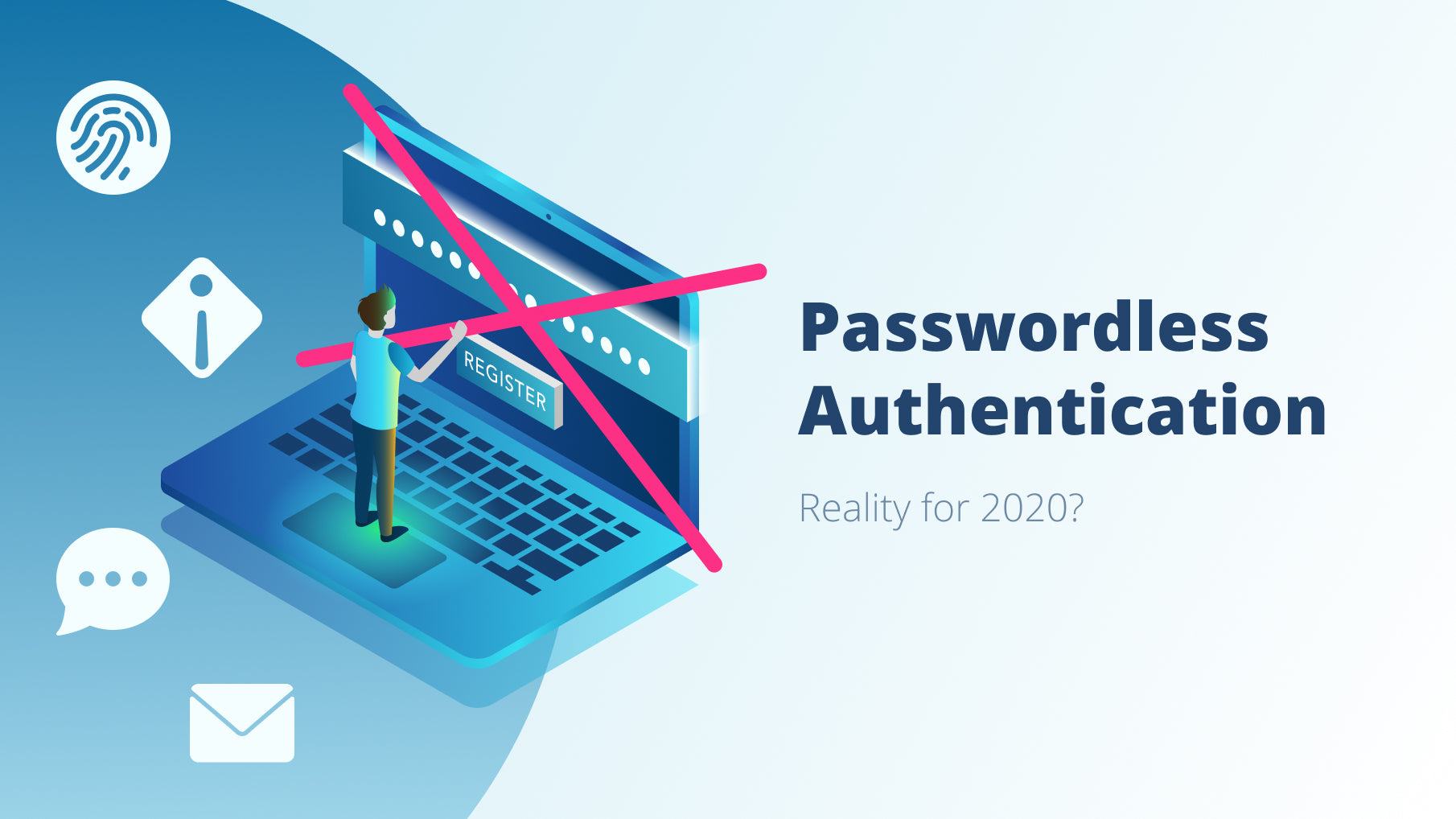Passwordless authentication: Reality for 2020?

Passwords have always been regarded as the most trusted way of securing sensitive information. But, with the rapid globalization and development of the internet over the past few decades, passwords no longer take the top as the most secure method of protecting information. With passwordless authentication, there is no need to use passwords, which could practically eliminate the chances of suffering a security breach. As passwordless authentication is quickly becoming a popular method of securing valuable information, it only remains to be seen how ubiquitous can it grow in 2020 and the years to come. Continue reading to find out everything there is to know about this authentication solution.
Why We Strive for a Passwordless World
Passwordless authentication sounds like a very futuristic and sophisticated security authentication solution, but what does it really mean to go passwordless? To put it simply, using passwordless credentials means that you can confirm your login identity through biometrics, token-based or knowledge-based authentication, or other similar unique authentication factors.
The main draw of passwordless authentication is that the user's authentication information is never stored within a system, unlike a password. It gives passwordless authentication a significant security advantage. Of course, before passwordless authentication becomes the norm in everyday life, all of us need to put our trust into real-time verifications and end our dependency on password-controlled accounts.
Many regulatory bodies and companies have already come to understand all of the weaknesses classic password authentication solutions come with. The biggest telltale sign of this is the constantly increasing password authentication factors, like complexity, length, and scheduled change cycles. That's why passwordless authentication has become quite a common thing on many devices. It primarily works for gadgets that support biometric and facial recognition. Leading IT companies like Google and Microsoft have already implemented passwordless authentication into their systems.
Google's motivation to introduce passwordless authentication was the increasing number of phishing scams, which are reduced to a minimum with this authentication solution. As for the latter of the two companies mentioned above, the passwordless authentication Microsoft uses is mainly set in place to help people use a biometric or other authentication solution to access Microsoft apps and resources. This passwordless approach means that you need no password to access Windows 10 on any platform besides PC, be that a Mac, Chromebook, Android, or iOS.
Benefits of Passwordless Authentication
By replacing a classic password-oriented system with one that runs on passwordless authentication, both businesses and individuals will see significant improvement in overall security level and quality of experience. There are many benefits of passwordless authentication, with the most notable ones being:
- Better User Experience – Imagine if all of a sudden, you could log into any account with no password credentials. It means no secret password folders or notes, no more trouble in trying to remember the memorized password. The entire authentication process would be much smoother and enjoyable.
- Safer Information – Not only will passwordless authentication allow much more convenient account management, but it will also bring numerous safety benefits. Due to the factors, we mentioned previously, user-controlled passwords often present a very unreliable authentication solution and can pose as a major vulnerability. With passwordless authentication, the user element is removed from the equation, resulting in much better overall security.
- IT Maintenance Benefits – By introducing passwordless authentication, businesses will eliminate a lot of unnecessary costs, since their IT staff won't need to monitor and deal with password-related problems constantly. In addition, the IT department will also reclaim complete control over the identity access and management process.
What Happens if you Need to Recover Credentials?
By now, all of us know how passwords work. If you lose your device or forget a password, you have to jump through various hoops to reset your old password and create a new one. But what happens if you lose a device or your hardware authentication token? In this case, you will still have to go through a similar recovery mechanism through a reversed passwordless credential process.
That said, while this process is very safe at the time being, making it as streamlined as possible while still maintaining high levels of security could be the biggest challenge going into the future.
Passwordless Authentication Options
To sum up this page on passwordless authentication, we would also like to take a brief overview of the best options currently available out there. They include:
- Single Factor Authentication – Passwordless single-factor authentication is based on simple biometric methods, such as facial, voice, or finger recognition, alongside 1FA tokens.
- Multi-factor Authentication – Unlike the previous one, multifactor authentication requires at least two categories of credentials. These multifactor authentication credentials can include PIN-protected smart cards, biometric-enabled cards, single-step mobile push, and other similar methods.
- Zero Factor Authentication+CARTA – Zero factor authentication includes rule-based evaluation and analytics, consuming a range of familiarity signals. The second part of this authentication option allows companies to manage security credentials and sensitive information more easily.
Going passwordless is undoubtedly the right way to go in 2020. While this process certainly won't be finished on a global scale for quite some time, the many benefits passwordless authentication brings to the table will help provide an unprecedented level of trust between companies and individuals.
Hideez Enterprise solution offers secure multi-factor authentication for businesses. IT administrators can set up factors for different roles and employees using a PIN, button on Hideez Key, OTP, or Master Key. To learn more about how we can protect your information - schedule a free demo:
Denis Zaliznyak is the CTO of Hideez, specializing in passwordless authentication, cybersecurity, and identity & access management (IAM) solutions. With a strong background in software development and security architecture, Denis plays a key role in designing and implementing FIDO2-based authentication technologies, secure access management systems, and enterprise-grade security solutions.




